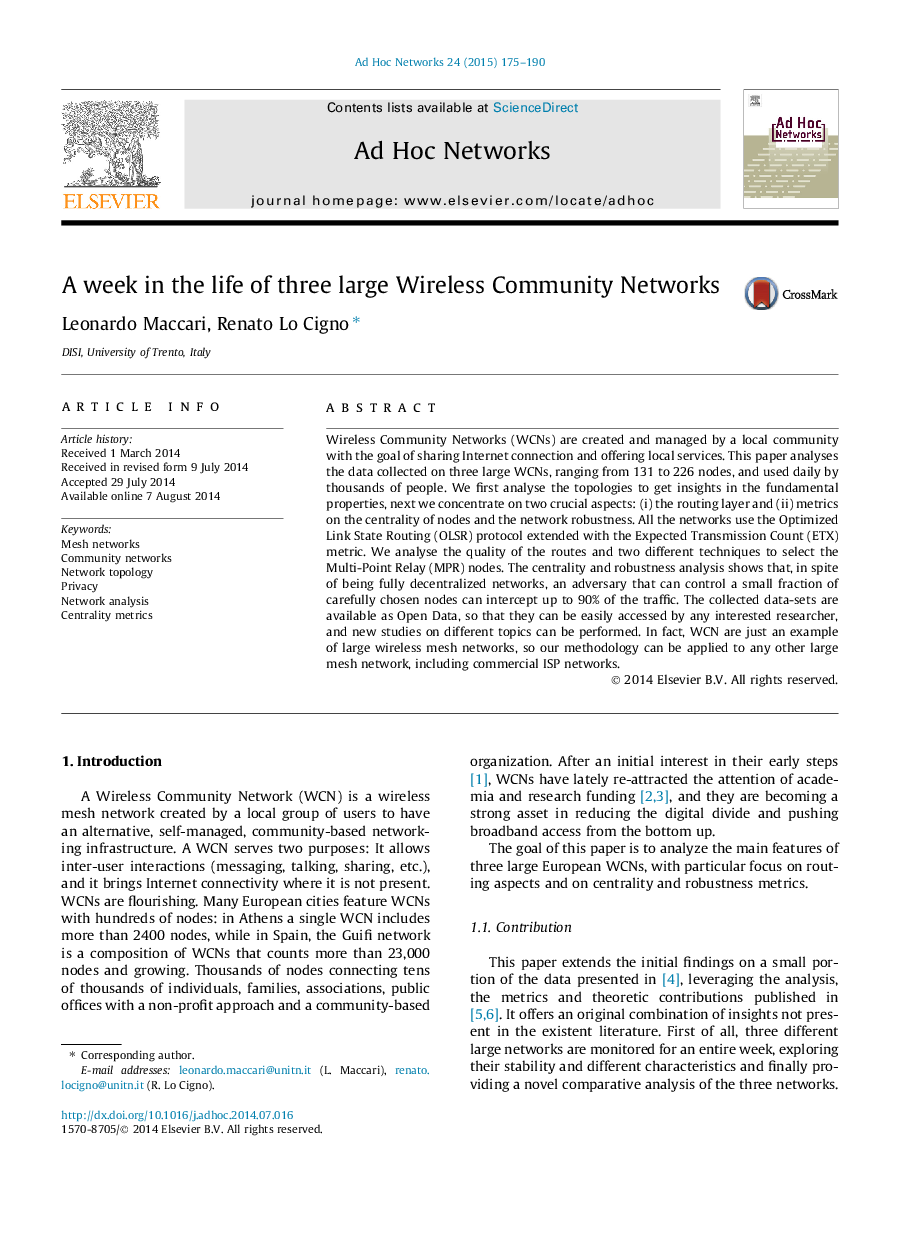| Article ID | Journal | Published Year | Pages | File Type |
|---|---|---|---|---|
| 445706 | Ad Hoc Networks | 2015 | 16 Pages |
Wireless Community Networks (WCNs) are created and managed by a local community with the goal of sharing Internet connection and offering local services. This paper analyses the data collected on three large WCNs, ranging from 131 to 226 nodes, and used daily by thousands of people. We first analyse the topologies to get insights in the fundamental properties, next we concentrate on two crucial aspects: (i) the routing layer and (ii) metrics on the centrality of nodes and the network robustness. All the networks use the Optimized Link State Routing (OLSR) protocol extended with the Expected Transmission Count (ETX) metric. We analyse the quality of the routes and two different techniques to select the Multi-Point Relay (MPR) nodes. The centrality and robustness analysis shows that, in spite of being fully decentralized networks, an adversary that can control a small fraction of carefully chosen nodes can intercept up to 90% of the traffic. The collected data-sets are available as Open Data, so that they can be easily accessed by any interested researcher, and new studies on different topics can be performed. In fact, WCN are just an example of large wireless mesh networks, so our methodology can be applied to any other large mesh network, including commercial ISP networks.
